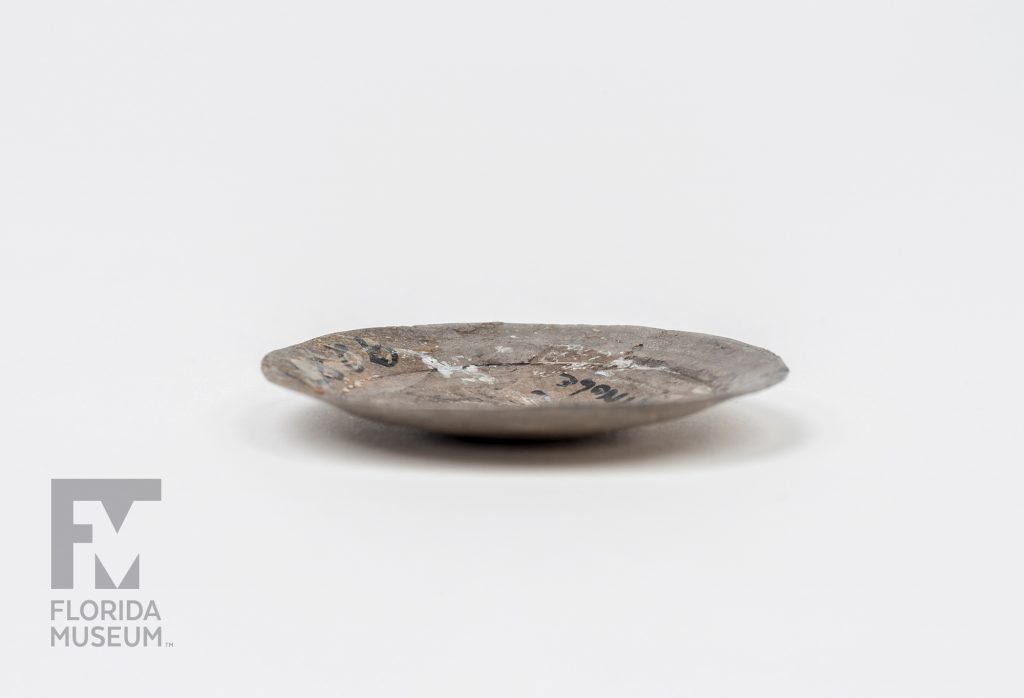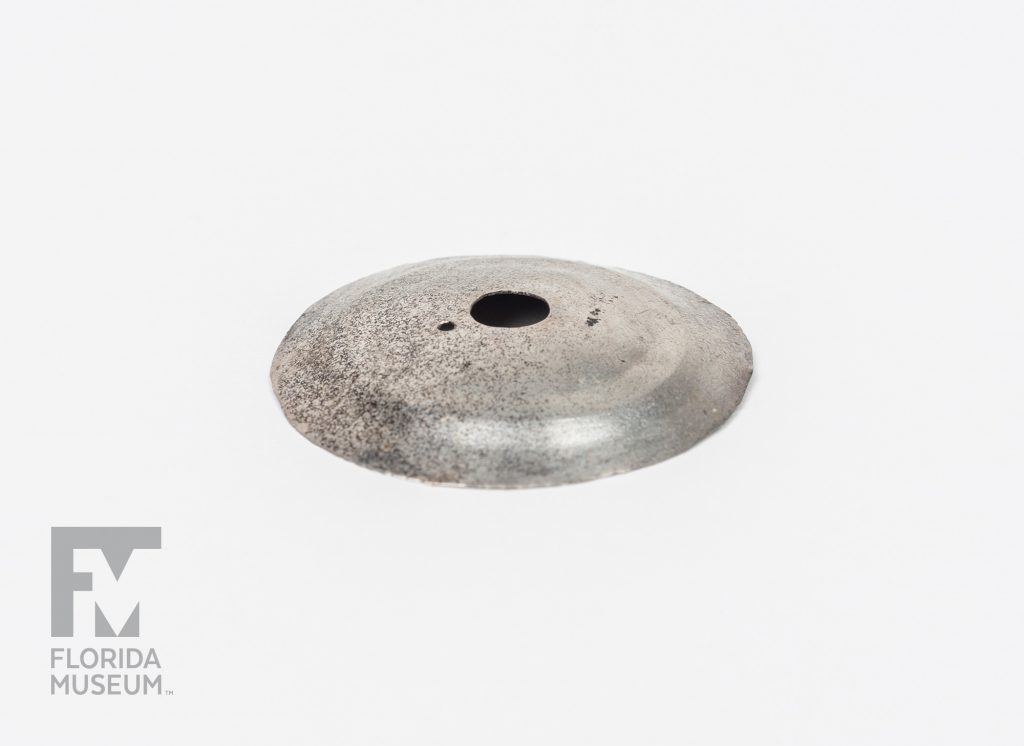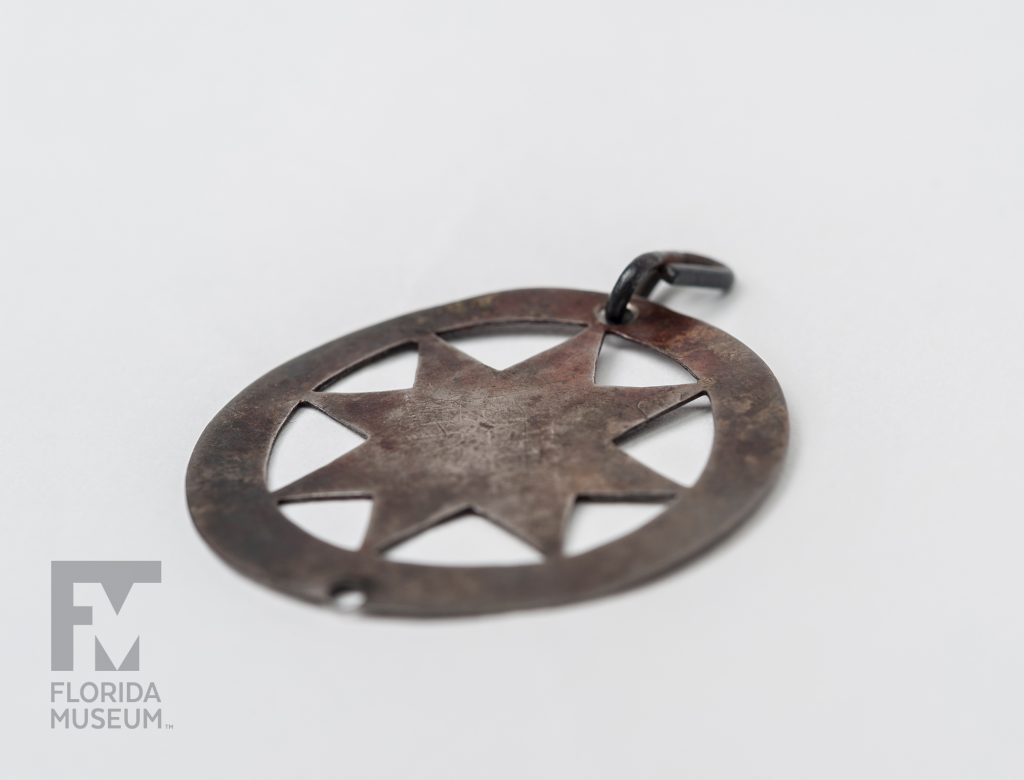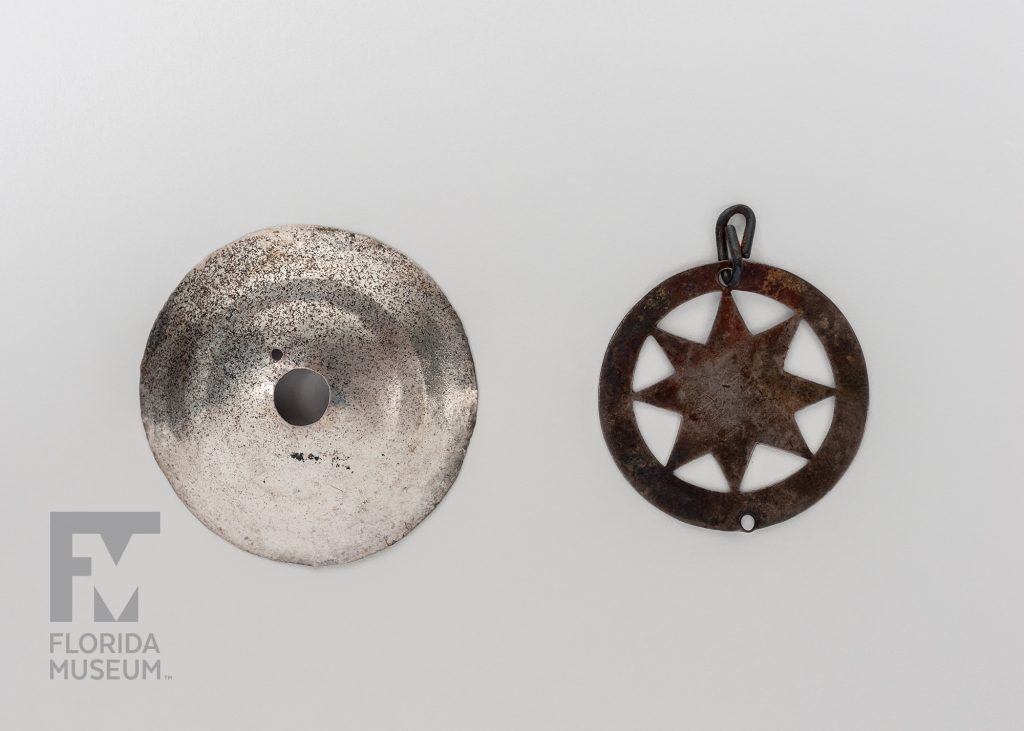Pierced metal pendants, made to ornament women’s clothing, are a uniquely Seminole tradition. Artists made them from various metals including coins or even tin cans. Today some metalworkers are trying to revive the tradition.
Summary
Metal Ornaments
Left: Made at Dania Reservation, Broward Co., Florida
Dates to ~1940–1942
Right: Made at Tommy Tigertail’s camp, South Florida
Dates to ~1930s
Collection
Story
Coin necklaces were worn by Seminole women by the mid-19th century. These were usually dimes and quarters with little holes punched in their edges so they could be worn as a necklace or attached to clothing. In a sense they “wore their wealth.”
By the 1920s, Seminole artisans were heating coins in a fire, then hammering them flat to make a thin disc. Then they embossed the edges or made cutout designs. These particular pieces are called pierced silver pendants and they were made using a cold chisel technique. They made the cutouts in various geometric designs. These are made to look like stars. Some women wore them dangling from their hair; others attached them to their blouses and capes.
Bill Marquardt
Curator, South Florida Archaeology & Ethnography*
Director, Randell Research Center*
Florida Museum of Natural History
Exhibit
On display Sept. 23, 2017-Jan. 7, 2018, Rare, Beautiful & Fascinating: 100 Years @FloridaMuseum celebrated the Museum’s rich history. Each Museum collection was asked to contribute its most interesting items and share the stories that make them special. Though the physical exhibit is closed, this companion website remains online, providing an opportunity to experience the Florida Museum’s most treasured specimens.
Exhibit Area: Objects Tell Stories
Theme: Seminoles in Florida
 Want to see more? Explore more than 300 breathtaking color photos of plants, animals, fossils and cultural heritage materials from the Florida Museum of Natural History’s collections in the award-winning book All Things Beautiful available from the University Press of Florida.
Want to see more? Explore more than 300 breathtaking color photos of plants, animals, fossils and cultural heritage materials from the Florida Museum of Natural History’s collections in the award-winning book All Things Beautiful available from the University Press of Florida.
*This title was accurate at the time the exhibit was on display in 2017. Please visit the collection website to verify current staff and student information.



